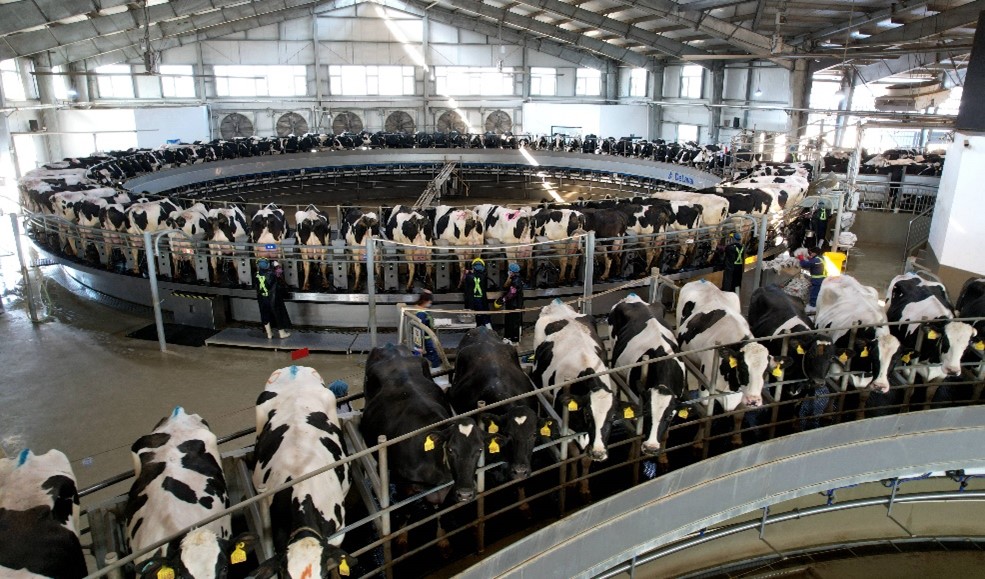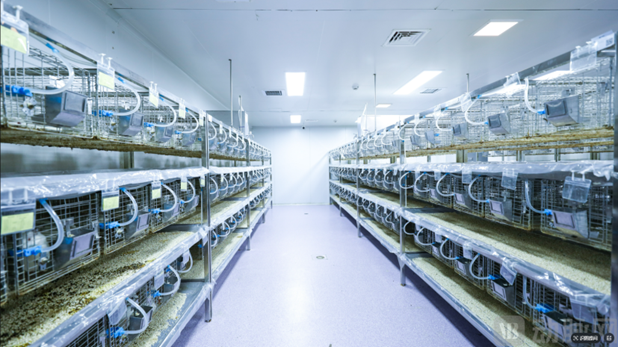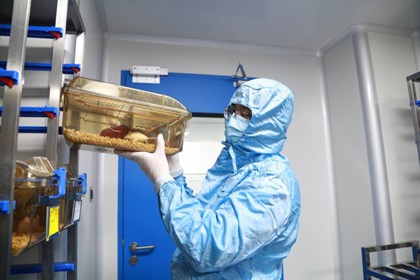Vacuum drainage system for animal manure-An efficient collection solution from farm to laboratory
Vacuum drainage system for animal manure
An efficient collection solution from farm to laboratory
The collection and treatment of animal manure is both a core part of pollution control in aquaculture and a fundamental task to ensure sample accuracy in laboratory animal research. Traditional collection methods (such as manual manure removal, water flushing collection, manual sampling, etc.) have problems such as low efficiency, high pollution risk and waste of resources, while vacuum drainage systems, with the core advantages of "negative pressure drive, closed transmission", are gradually becoming a new solution in both scenarios. This article will break down the design logic, application value and future direction of the system in aquaculture and laboratory scenarios based on its principles.
1. Vacuum drainage system: The principle of "negative pressure transfer" for fecal collection
The core of a vacuum drainage system is "fluid transfer in a negative pressure environment", and its basic composition consists of four parts:
Collection terminal: A fecal access device designedaccording to the scenario (such as a fecal slat interface in anaquaculture pen, a fecal diversion channel in a laboratory cage);
Vacuum pipe: A dedicated pipe that isresistant to corrosion and pressure (usually made of PVC or stainlesssteel), responsible for the sealed transport of feces;
Vacuum generator: A vacuum pump or vacuum unit that creates a negative pressure of -0.04 to -0.08 MPa in the pipe byevacuating air (depending on the distance of transmission);
Terminal processing unit:Fecal storage tank (in aquaculture scenarios) or sample collector (inlaboratory scenarios) for centralized storage or separation of feces.
When in operation, feces from the collection terminal enter the pipeline under negative pressure "suction" and are transported to the terminal with a small amount of flushing water (or purely negative pressure-driven) -- the entire process does not rely on gravity (the pipeline can be arranged horizontally or at an incline) and is fully sealed, reducing odor diffusion and contaminant leakage from the source.
2. Aquaculture Scenarios: The "environmental + efficiency" dual requirements for large-scale fecal collection
The core pain points of manure collection in large-scale farming (such as pig, egg-laying chicken, and beef cattle farming) are "large volume, easy pollution, and high processing costs." Traditional flushing collection requires a large amount of water resources (30-50 liters of flushing water per pig per day), and it is difficult to handle the mixed manure water; Manual manure removal is inefficient (one person can handle up to 500 pigs' manure per day) and can lead to the spread of pathogens. The design of vacuum drainage systems needs to address these issues specifically.

1. Key points of system design for aquaculture scenarios
Collection terminals adapted to animal types:
o Pig/beef cattle: Install a slatted floor at the bottom of the pen, with a vacuum collection port (diameter 10-15cm) below, along with timed negative pressure start-up (once every 2-4 hours) to prevent manure accumulation;
o Laying hens/broilers: In cage mode, inclined deflector plates are set at the bottom of the cage to allow the manure to slide naturally into the vacuum collection trough (trough width 20-30cm), and the negative pressure operates continuously (to prevent clogging by chicken feathers).
Compatibility of pipelines with negative pressure: In aquaculture scenarios, the transmission distance is typically50 to 200 meters. Main pipelines with a diameter of 15 to 20cmshould be used, and the negative pressure should be controlled between-0.05 and -0.07 MPa. Branch pipes (connecting pens) are 8-12cm in diameterand operate independently in a single area controlled by valves (for easymaintenance).
Anti-clogging and pre-treatment: Install"buffer elbows" inside the pipe (to reduce fecal retention) andfilter screens at terminal collection ports (to intercept feed residue,feathers, etc.) to prevent large impurities from entering the pipe.
2 Core advantage over conventional methods
Comparison dimensions | Traditional way (waterflush/manual) | Vacuum drainage system |
Water consumption | High (more than 100 tons of water per 10,000 pigs per day for water-flushing) | Low (only a small amount of rinsing water is needed, saving more than 70% of water) |
Pollution control | There is a high risk of fecal water leakage and odor spread | Sealed throughout the process reduces odor spread by over 90% |
Collection efficiency | Manual fecal removal relies on human labor and the efficiency fluctuates greatly | Automated operation, with a single system capable of serving tens of thousands of pigs |
Post-processing adaptability | The mixed concentration of fecal water is low, and the treatment cost is high | The moisture content of the manure is controllable (adjustable flushing volume), which is convenient for composting or biogas fermentation |
For example, after a 10,000-head pig farm adopted a vacuum drainage system, the daily water consumption dropped from 120 tons to 30 tons, the manure collection cycle was shortened from "manual manure removal once a day" to "automatic collection once every 3 hours", and the number of complaints about the surrounding odor decreased by 80%. The subsequent composting efficiency of the manure residue increased by 30% (because the moisture content was more stable).
3. Laboratory Scenarios: The core demand of "sterile + controllable" for precise sampling
Fecal collection in animal laboratories (such as mice, rats, rabbits and other laboratory animals in pharmacological research and infectious disease research), the core requirements are "no contamination of samples, precise collection, harmless operation". Traditional manual sampling requires opening cages for manual collection, which can cause stress in animals (affecting sample stability), and may be mixed with hair, feed residues due to improper operation, and even pose a risk of contact between laboratory personnel and pathogens (such as feces carrying bacteria).

1 Key points of system design for laboratory scenarios
Miniaturized, customized collection terminals:
For mice/rats: A "negative pressure sampling port" (2-3cm in diameter) is set at the bottom of the cage, with a built-in filter (intercepting bedding), and local negative pressure is initiated by a foot switch (running for 5-10 seconds at a time), with feces being sucked into a dedicated sample tube;
For large laboratory animals (such as rabbits and dogs) : Inclined diversion channels are placed at the bottom of the cage, connected to a vacuum interface at the end, and combined with timed negative pressure (once every 6-12 hours, adjusted according to the experimental cycle), feces enter sterile collection bottles (sample numbers can be directly marked).
Low-interference, high-cleanliness transport design: The tubing is made of food-grade stainless steel (to avoidmaterial leaching and contaminating the sample), with a diameter of 3-5cm(suitable for small-dose transport), and can be automatically flushed with"negative pressure + disinfectant" after each batch ofexperiments (to avoid cross-contamination).
Sample integrity assurance: The negativepressure intensity needs to be precisely controlled (typically -0.03 to-0.05 MPa) to avoid fecal particle breakage due to excessive suction(affecting morphological analysis); The terminal collector is designed tobe centrifugal and automatically separates feces from a small amount offlushing water upon entry (for subsequent testing).
2 Core advantage over traditional methods
Improved sample accuracy: Avoidingsample contamination caused by human contact, the success rate of samplingincreases from 85% of traditional manual to over 99% (reducing missed andwrong sampling);
Enhanced experimental safety: Fully sealedtransport, no direct contact with feces for experimenters, pathogenexposure risk reduced by more than 95%;
Operational efficiency optimization: Thesingle-cage sampling time is reduced from 1-2 minutes manually to 10-20seconds, and multiple cages can be sampled simultaneously (collected inparallel through branch pipes).
For example, in an infectious disease laboratory studying "Gut microbiota and drug metabolism", after applying a vacuum sampling system, the "contamination rate" of mouse fecal samples was reduced from 12% to less than 1%, and because there was no need to frequently open the cages, the fluctuation of sample indicators caused by animal stress was reduced by 60%, and the repeatability of experimental data was significantly improved.

Iv. Commonalities and Differences between the Two Types of Scenarios: The "Similarities and Differences" in System Design
The core principle of vacuum drainage systems in aquaculture and laboratory scenarios is the same (negative pressure transmission), but the design focus is significantly different due to the differences in requirements:
Design Dimensions | Aquaculture scenarios | Laboratory scene |
Core Objective | Large-scale collection, environmentally friendly and efficient | Accurate samples, sterile and safe |
Transshipment volume | Large (tons per day for a single system) | Small (a few grams to hundreds of grams per batch) |
Pipe material | PVC (low cost, corrosion-resistant) | Food-grade stainless steel (anti-contamination) |
Negative pressure control | Stable continuous operation (adjustable frequency as needed) | Intermittent operation (start on demand |
Follow-up processing | Connect to the manure treatment system (compost, biogas) | Dock sample storage/testing equipment |
Maintenance priorities | Anti-clogging (dealing with large impurities) | Anti-contamination (pipe disinfection, material cleaning) |
Conclusion
The core value of the animal manure vacuum drainage system lies in reconstructing the logic of manure collection with "negative pressure transmission" - from "passive cleaning" to "active, closed, efficient" source control. With the reduction in technology costs and the optimization of design, these systems can not only address the pain points of traditional collection methods, but also provide underlying support for the green development of animal husbandry and the precision of laboratory research, becoming the key technology for the transformation of "animal manure management" from "treatment end governance" to "collection end optimization".